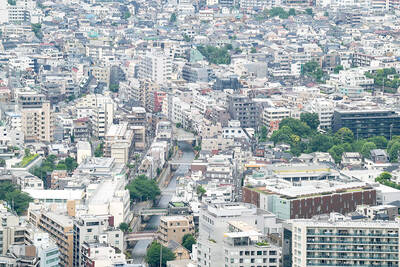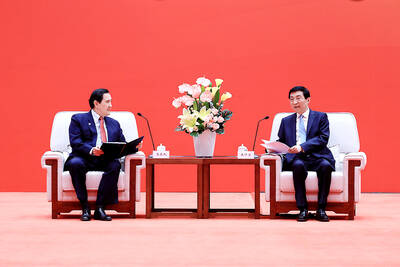Few musicians would allow a journalist to accompany their band through one of the world’s most dangerous countries. Even fewer, one suspects, would be happy about their father being that journalist. But Manu Chao is not just any musician, and his father, Ramon, is not just any journalist — so perhaps it should surprise no one that they ended up together on a legendary 1993 tour of Colombia by train, carrying not just musicians, acrobats and tattooists, but a fire-eating dragon and an ice museum as well.
Ramon’s account of that journey, The Train of Ice and Fire is published in English on Feb. 9. For Manu’s growing army of admirers, the book provides a magical-realist insight into how his music has developed. For the tour, Manu and his then band, Mano Negra, took a special train across the country, performing free at stations for people unable to afford the concerts. A 50-strong Colombian-French team constructed the train out of a functioning locomotive and decommissioned carriages and off they went, ignoring all warnings of kidnappings and worse.
Part of the plan was to pay homage to Gabriel Garcia Marquez’s One Hundred Years of Solitude, by taking a slab of ice to Aracataca, the town on which the novel is based. Ice is a key theme in the book, from the opening sentence: “Many years later, as he faced the firing squad, Colonel Aureliano Buendia was to remember that distant afternoon when his father took him to discover ice.” Clearly, the journey needed someone to write it down.
“What you write must be accessible to everyone,” Manu told Ramon. “You mustn’t use too many literary references. Your last novel was too ornate. I couldn’t finish it.”
The train traveled through territory contested by FARC guerrillas and the army, attracting the curiosity of both — plus spectators in their thousands, and stowaways. Manu was impressed by the resilience of his audience. In the book, he recounts spending time with Bogota’s street children: “Life’s hell for them. But despite everything, they’re more cheerful than you or me. They’re 12 years old, drugged to the gills and not one of them’s a virgin. When they go to sleep at night, they don’t know if they’re going to wake up — a plastic bag over the head, in the boot of a car, over the mountain and, pow, a bullet in the head.”
Ramon was stunned by what they saw of the country during the tour. “It is hard to believe that there is so much violence in such a friendly, affectionate people,” he says, on a recent visit to London. To judge by the book, the father, now 73, seems to have indulged in more rock ’n’ roll behavior than the son. Although he had never taken drugs and did not even smoke cigarettes, he could not resist some marijuana cake on offer on Christmas Eve. “I was in the clouds and totally out of it for two days. Manu said, ‘Honestly, Papa, I can’t leave you anywhere.’ On another occasion, when I got a tattoo, his reaction was the same. But I think he really liked the fact that I came.”
Music runs in the family. Ramon was a child prodigy, a classically trained pianist who left Spain to study at the Conservatoire in Paris. “My father thought I would be the next Mozart but I wanted to be Cervantes,” he says. Did he inspire Manu? “When I was 10 or 11, he tried to make me play the piano but I preferred football,” says Manu.
The 1993 tour did, in the end, split the band, some of whom departed before the final concerts. Manu returned to Paris disheartened, and went on to form his new band, Radio Bemba. He nearly recruited a new band member in Colombia — a street kid, Rondelle, who could sing and dance brilliantly.
The Latin-American connection continues. Manu’s new single, La Vida Tombola, is featured in Maradona, a documentary about the Argentine footballer, about to be released on digital download. Father and son have an enduring involvement in Radio La Colifata, which translates as “Radio Loony,” and broadcasts live from a mental hospital in Buenos Aires. Manu will be appearing on the radio station again this year, perhaps recounting the tale of that train of ice and fire.

The canonical shot of an East Asian city is a night skyline studded with towering apartment and office buildings, bright with neon and plastic signage, a landscape of energy and modernity. Another classic image is the same city seen from above, in which identical apartment towers march across the city, spilling out over nearby geography, like stylized soldiers colonizing new territory in a board game. Densely populated dynamic conurbations of money, technological innovation and convenience, it is hard to see the cities of East Asia as what they truly are: necropolises. Why is this? The East Asian development model, with

Desperate dads meet in car parks to exchange packets; exhausted parents slip it into their kids’ drinks; families wait months for prescriptions buy it “off label.” But is it worth the risk? “The first time I gave him a gummy, I thought, ‘Oh my God, have I killed him?’ He just passed out in front of the TV. That never happens.” Jen remembers giving her son, David, six, melatonin to help him sleep. She got them from a friend, a pediatrician who gave them to her own child. “It was sort of hilarious. She had half a tub of gummies,

The wide-screen spectacle of Formula One gets a gleaming, rip-roaring workout in Joseph Kosinski’s F1, a fine-tuned machine of a movie that, in its most riveting racing scenes, approaches a kind of high-speed splendor. Kosinski, who last endeavored to put moviegoers in the seat of a fighter jet in Top Gun: Maverick, has moved to the open cockpits of Formula One with much the same affection, if not outright need, for speed. A lot of the same team is back. Jerry Bruckheimer produces. Ehren Kruger, a co-writer on Maverick, takes sole credit here. Hans Zimmer, a co-composer previously, supplies the thumping

There is an old British curse, “may you live in interesting times,” passed off as ancient Chinese wisdom to make it sound more exotic and profound. We are living in interesting times. From US President Donald Trump’s decision on American tariffs, to how the recalls will play out, to uncertainty about how events are evolving in China, we can do nothing more than wait with bated breath. At the cusp of potentially momentous change, it is a good time to take stock of the current state of Taiwan’s political parties. As things stand, all three major parties are struggling. For our examination of the